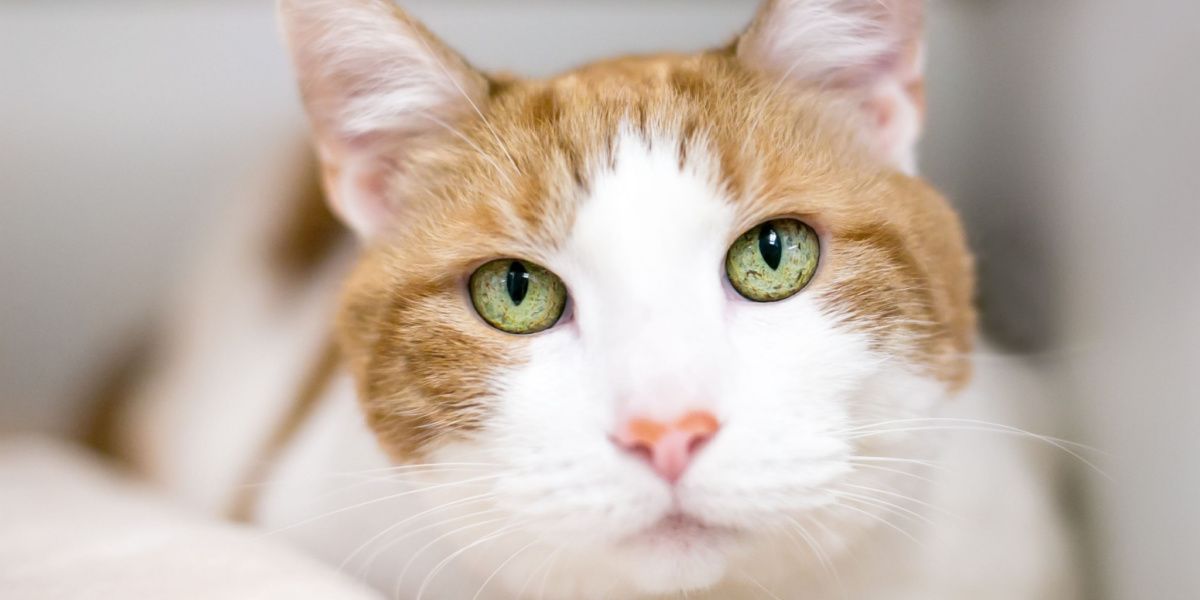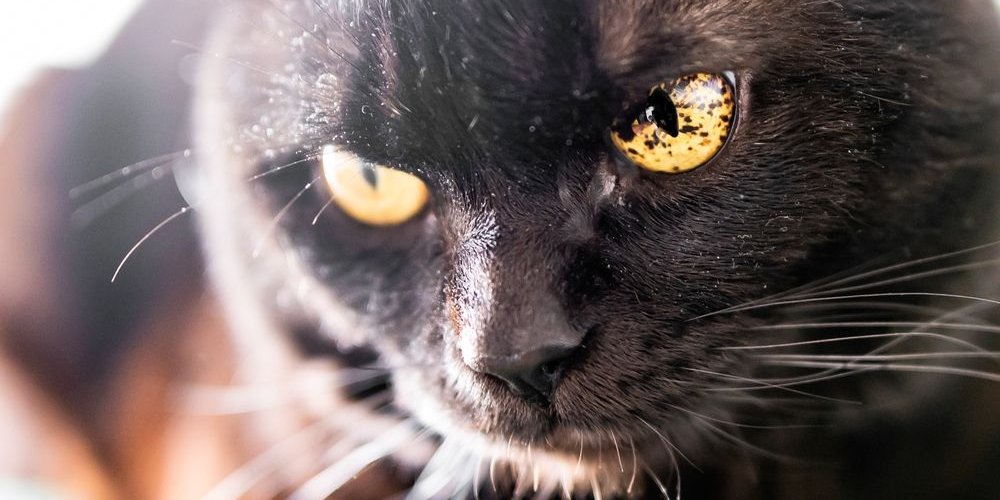
Mary Swift / Shutterstock.com
Quick Overview: Summary of iris melanosis in cats











Iris melanosis is a type of iris hyperpigmentation, which is an increase in dark pigmentation on the iris. The iris is the colorful part of the eye and varies between cats—from yellow or amber to hazel, green, or blue. In iris melanosis, dark spots or patches of dark brown pigment appear on the iris. They can usually be seen quite clearly without exam tools.
These patches of pigment can be likened to freckles on human skin and they are typically harmless. However, in some cases, iris melanosis can transform into uveal melanoma, a type of malignant tumor. So it is important to monitor this disease closely despite its predominantly benign nature.
Causes of Iris Melanosis
The cause of iris melanosis is unknown. Simply, the pigmented cells (melanocytes) in the iris start to multiply and produce more pigment than normal, creating a brown or black lesion that looks abnormal. A small patch of pigment on the iris may be called an “iris freckle” and a larger patch of pigment on the iris may be called an “iris nevus” (plural: iris nevi).
Symptoms of Iris Melanosis in Cats
Iris melanosis is common and is most often seen in middle-aged cats. All cats can be affected—there is no breed predisposition.
The signs of this condition are usually obvious to an owner. There are patches of dark brown or black pigmentation in one or both of a cat’s eyes so that the iris looks different from normal. It’s usually seen just in one eye, but both eyes can be affected.
Complications of Iris Melanosis in Cats
In some cases, iris melanosis can transform over time into uveal melanoma, a type of malignant tumor that can spread to the lymph nodes, lungs, spleen, kidneys, bone, and other parts of the body. This metastatic disease then leads to premature death. The malignancy of uveal melanoma is the reason why it is so important to carefully monitor iris melanosis. This is similar to the idea that humans need to monitor freckles on their skin in case they develop into malignant melanoma. Uveal melanoma is also known as Feline Diffuse Iris Melanoma (FDIM).
A similar but unrelated condition that involves new pigment in the eyes is uveal cysts. Uveal cysts are small, brown or yellow, fluid-filled, circular structures that may be attached to the iris or floating in the front of the eye. These can be confused with iris melanosis.
Diagnosis of Iris Melanosis

Iris melanosis is usually obvious to see, but any changes to a cat’s eyes should be checked by a veterinarian. siamionau pavel / Shutterstock.com
If your veterinarian suspects that your cat may have iris melanosis, they will examine them carefully and take a history of when you first noticed any changes. They will then make a detailed examination of the eye with an ophthalmoscope or by using a slit lamp. Your veterinarian may perform this examination or they may take a quick look and refer you to a specialist. An ophthalmic veterinarian can perform a much more detailed, close-up eye examination.
They will search for signs that the pigmented areas were caused by benign iris melanosis, with the hope of ruling out uveal melanoma. The warning signs that such a uveal melanoma transformation may be happening include:
- Changes to the surface of the iris—e.g., smooth and unblemished to rough and irregular
- Iris thickening or growth
- Spreading of the pigment into other parts of the eye or into a larger part of the iris
- Changes in shape of the pupil so that it looks uneven (dyscoria)
- Secondary uveitis (inflammation of the iris)
They may also measure the pressure of the eye (intraocular pressure or IOP) or examine the eye using an ultrasound scanner. To make a definitive diagnosis, a specialist veterinary ophthalmologist may be needed to biopsy the pigmented tissue in the iris and then conduct a histopathology (microscopic tissue examination).
Treatment of Iris Melanosis

Iris melanosis is a benign change to the eye which doesn’t affect eyesight and does not require treatment. Barbarajo / Shutterstock.com
Iris melanosis does not require treatment because it is a benign condition that does not affect your cat’s vision. However, close monitoring of iris melanosis is important. Talk to your veterinarian about physical rechecks every 3–4 months to record any changes in the pigmentation of the iris. Photographs and measurements of objective criteria (such as the size of the pigmented area, the IOP, and the iridocorneal angle) may be taken and stored with the clinical records for future comparisons.
If there are concerns that areas of pigment may be progressing toward uveal melanoma, treatment options include laser therapy (photocoagulation) for early cases or possibly early enucleation (surgical removal of the entire eye). Early removal of the eye aims to maximize survival times in cases of iris melanoma. But it can be difficult to decide to remove a functional eye due only to a suspected risk of a serious problem when, in fact, the cat may just have a benign problem.
Cat Care Tips
Iris melanosis doesn’t require treatment but close monitoring is important, so here are our top tips.
- Regular checks: All cats should have regular veterinary exams, which can help discover any potential problems early.
- Take photos: If your cat has iris melanosis, take regular pictures or take notes so that any changes can be easily and quickly seen.
- Be vigilant for changes: Iris melanosis is benign and relatively slow to change. If the conditions seem to be progressing rapidly or causing other changes, such as vision impairment, speak to your veterinarian promptly.
Frequently Asked Questions
How long can cats live with iris melanosis?
Iris melanosis is a benign condition, and as long as it does not progress into iris melanoma, a cat can live a normal lifespan. However, continual monitoring is important so that if such progression does happen, early treatment can be given.
How is feline iris melanosis treated?
Iris melanosis does not require treatment, but it does need to be closely monitored in case of progression towards iris melanoma.
How much does it cost to treat a cat with iris melanosis?
Treatment is not required, but there is a cost to monitoring iris melanosis. A visit to your vet, or perhaps a specialist ophthalmological vet, may be needed three or four times a year, at a cost of between $100 and $300 for each visit.







